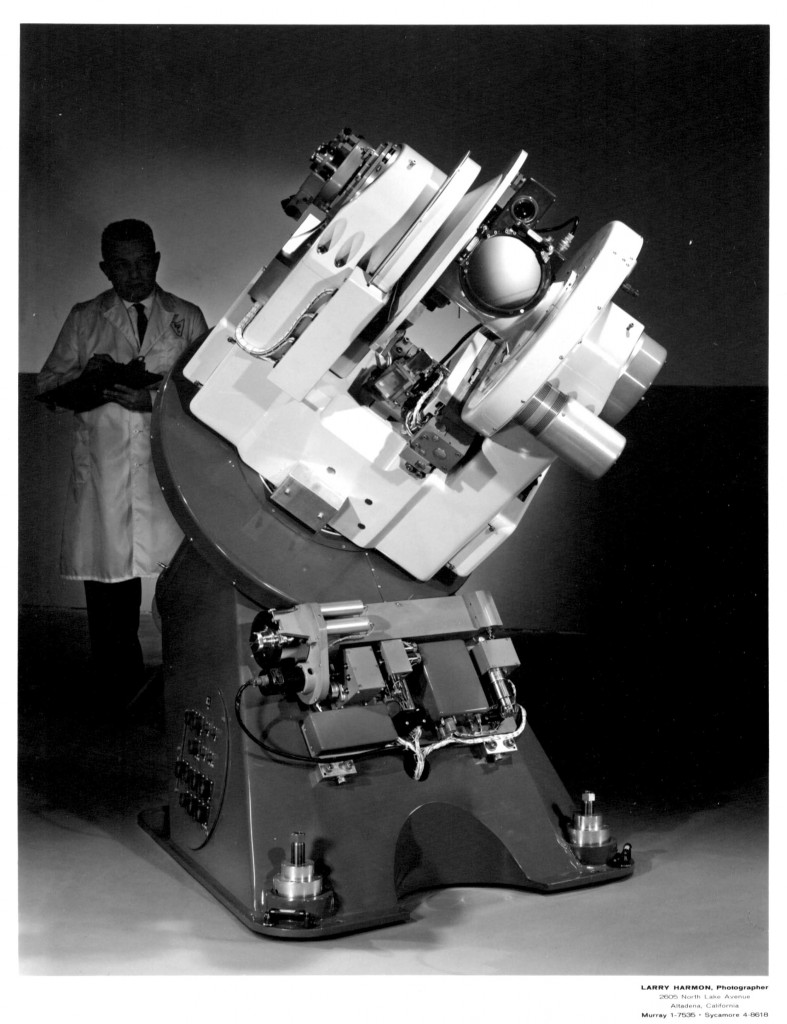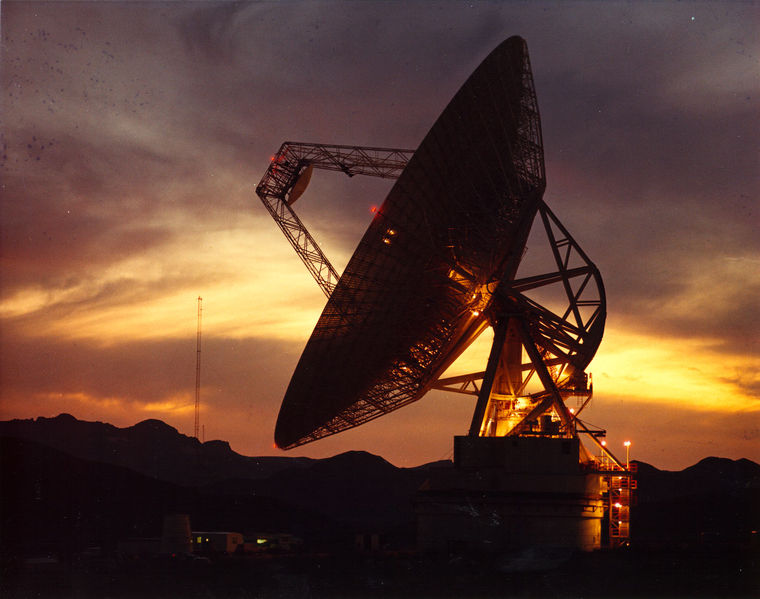 Bill Rehrig, of Boller and Chivens shown above
Bill Rehrig, of Boller and Chivens shown above
Boller and Chivens designed and manufactured three Master Equatorial Mounts for the three 70-meter radio telescopes located approximately equidistantly around the world. One is installed at Goldstone near Baker, California, one is installed at Tidbinbilla, Australia and one is installed in Robledo, Spain.
The Master Equatorial Mount is installed inside the 70-meter Radio Telescope’s dish in a dome-like housing at the intersection of where the Radio Telescope’s azimuth axis centerline crossed its elevation centerline. The fork type Master Equatorial mount would be driven to Declination and Hour Angle positions tracking in space at Right Ascension speed.
A front surface of an optical flat mirror assembly is installed on the Master Equatorial mount exactly where its polar axis crossed its declination axis and also coincides with the Radio Telescopes azimuth axis and elevation axis.
Mounted on the rear of the Radio Telescope’s dish is a 2nd optical flat mirror assembly that is spaced away from the 1st optical flat mirror assembly of the Master Equatorial Mount.
By an automatic optically auto-collimating system between the 1st and the 2nd flat mirrors, a read-out is documented exactly where the Radio Telescope dish was pointed in space.
When in operation the Master Equatorial Mount and the Radio Telescopes can be driven to a predetermined field of view. The auto-collimating system will then lock the Equatorial Mount to the Radio Telescope’s Master Equatorial Mount tracking this automatically. The reverse of this action is where the Radio Telescope is pointing at an unmapped area of interest in the sky. The Master Equatorial Mount will be driven into auto-collimation to the Radio Telescope and automatically track this interest area with positioning information being recorded.
The system’s angular repeatable accuracy was determined to be better than six arc-seconds.



Comments are closed.